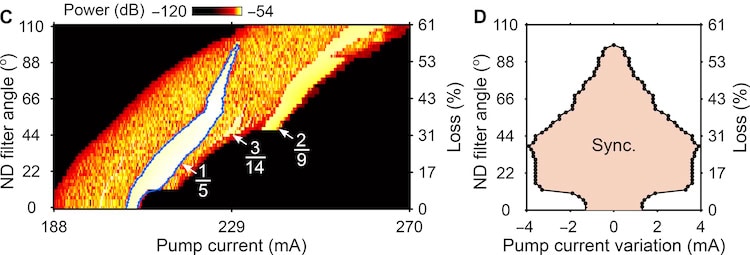Solar wind burst caused a heatwave on Jupiter
A burst of solar wind triggered a planet-wide heatwave in Jupiter’s upper atmosphere, say astronomers at the University in Reading, UK. The hot region, which had a temperature of over 750 K, propagated at thousands of kilometres per hour and stretched halfway around the planet.
“This is the first time we have seen something like a travelling ionospheric disturbance, the likes of which are found on Earth, at a giant planet,” says James O’Donoghue, a Reading planetary scientist and lead author of a study in Geophysical Research Letters on the phenomenon. “Our finding shows that Jupiter’s atmosphere is not as self-contained as we thought, and that the Sun can drive dramatic, global changes, even this far out in the solar system.”
Jupiter’s upper atmosphere begins hundreds of kilometres above its surface and has two components. One is a neutral thermosphere composed mainly of molecular hydrogen. The other is a charged ionosphere comprising electrons and ions. Jupiter also has a protective magnetic shield, or magnetosphere.
When emissions from Jupiter’s volcanic moon, Io, become ionized by extreme ultraviolet radiation from the Sun, the resulting plasma becomes trapped in the magnetosphere. This trapped plasma then generates magnetosphere-ionosphere currents that heat the planet’s polar regions and produce aurorae. Thanks to this heating, the hottest places on Jupiter, at around 900 K, are its poles. From there, temperatures gradually decrease, reaching 600 K at the equator.
Quite a different temperature-gradient pattern
In 2021, however, O’Donoghue and colleagues observed quite a different temperature-gradient pattern in near-infrared spectral data recorded by the 10-metre Keck II telescope in Hawaii, US, during an event in 2017. When they analysed these data, they found an enormous hot region far from Jupiter’s aurorae and stretching across 180° in longitude – half the planet’s circumference.
“At the time, we could not definitively explain this hot feature, which is roughly 150 K hotter than the typical ambient temperature of Jupiter,” says O’Donoghue, “so we re-analysed the Keck data using updated solar wind propagation models.”
Two instruments on NASA’s Juno spacecraft were pivotal in the re-analysis, he explains. The first, called Waves, can measure electron densities locally. Its data showed that these electron densities ramped up as the spacecraft approached Jupiter’s magnetosheath, which is the region between the planet’s magnetic field and the solar wind. The second instrument was Juno’s magnetometer, which recorded measurements that backed up the Waves-based analyses, O’Donoghue says.
A new interpretation
In their latest study, the Reading scientists analysed a burst of fast solar wind that emanated from the Sun in January 2017 and propagated towards Jupiter. They found that a high-speed stream of this wind arrived several hours before the Keck telescope recorded the data that led them to identify the hot region.
“Our analysis of Juno’s magnetometer measurements also showed that this spacecraft exited the magnetosphere of Jupiter early,” says O’Donoghue. “This is a strong sign that strong solar winds probably compressed Jupiter’s magnetic field several hours before the hot region appeared.
“We therefore see the hot region emerging as a response to solar wind compression: the aurorae flared up and heat spilled equatorward.”
The result shows that the Sun can significantly reshape the global energy balance in Jupiter’s upper atmosphere, he tells Physics World. “That changes how we think about energy balance at all giant planets, not just Jupiter, but potentially Saturn, Uranus, Neptune and exoplanets too,” he says. “It also shows that solar wind can trigger complex atmospheric responses far from Earth and it could help us understand space weather in general.”
The Reading researchers say they would now like to hunt for more of these events, especially in the southern hemisphere of Jupiter where they expect a mirrored response. “We are also working on measuring wind speeds and temperatures across more of the planet and at different times to better understand how often this happens and how energy moves around,” O’Donoghue reveals. “Ultimately, we want to build a more complete picture of how space weather shapes Jupiter’s upper atmosphere and drives (or interferes) with global circulation there.”
The post Solar wind burst caused a heatwave on Jupiter appeared first on Physics World.

